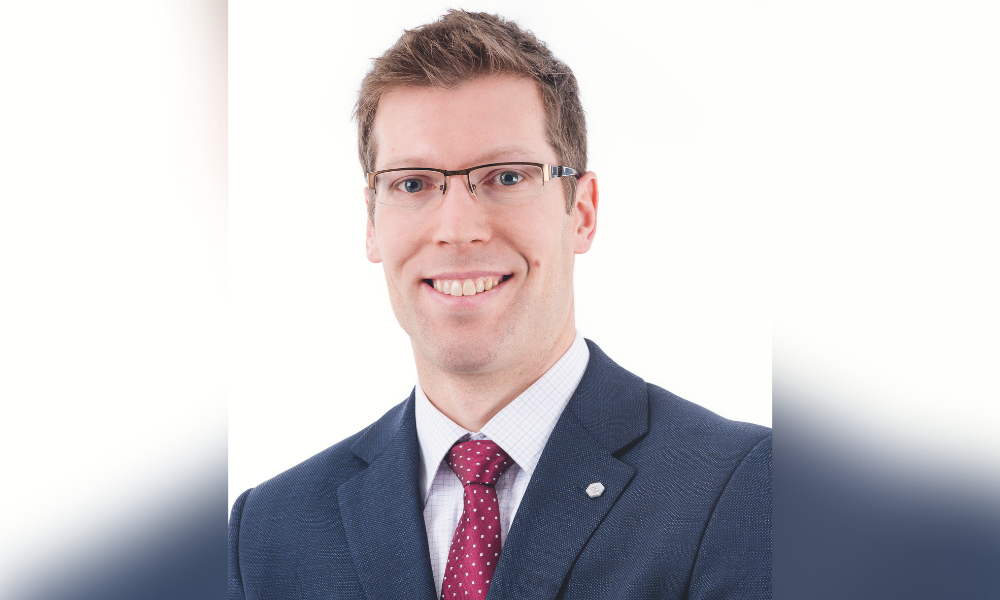Director of firm’s structured-products business explains the need-focused philosophy behind its award-winning success

When asked what he loves about structured products, Benoit Bélanger hardly needed any time at all to answer.
“I like the fact that they offer more defined outcomes. You know what you’re getting into,” the director, Equity Derivatives & Structured Products at Desjardins Investment Solutions told Wealth Professional. “These products can be customized to better answer client needs, and help advisors hedge or take profits from specific market views.”
Bélanger has been with Desjardins for 17 years. He joined the firm straight after graduating from Sherbrooke University, where he earned both a Bachelor’s and a Master’s degree in Finance.
After being involved in developing credit risk models at the early phase of his career, he wanted to get into a quantitative role that had a more direct application to finance. That interest served him well as he joined the firm’s structured products business.
“These products can be adapted or adjusted really easily. Compared to a traditional fund, the time to market for these are relatively shorter,” he said. “So it's a really dynamic industry, and it’s still very interesting to me even after all these years.”
With skilled professionals like Bélanger in its stable, Desjardins has established itself as the leader in Canada’s structured products industry. Recently, the firm distinguished itself for the 10th consecutive year at the UK-based Structured Retail Products Awards, where it won in the “Best House, Canada” and “Deal of the Year, Americas” categories.
Since 2012, Desjardins has accumulated 22 international awards for its work on structured products. Its history developing these types of instruments stretches back nearly 25 years, making it one of the first institutions in Canada to explore the space.
“We’ve developed a good expertise at creating structured products,” Bélanger said. “One of our strengths is the proximity we have with advisors, and distributors, which lets us get great feedback to adjust the products if needed. We really want to make sure that we create the best product possible to answer the client's needs.”
To prevent negative surprises and increase the chances of renewals at maturity, Desjardins also invests a lot of time to make sure clients understand what they’re buying. Because of that, Bélanger said, the firm has been able to cultivate a high level of customer satisfaction with its products.
Of course, it’s not all smooth sailing. In 2008, just as he joined the firm’s Structured Products division, the Global Financial Crisis rocked markets and roiled portfolios across the world. It was the first honest-to-goodness stress test for many investment products, which up to that point had performed relatively well.
“It was an interesting time for structured products,” Bélanger recalled. “Because of the generally lower returns in the market, we had a lot of products that were maturing and not yielding any return. So we had to create products that offered a minimum return at maturity … It was a good opportunity to innovate and adapt.”
Desjardins had another opportunity to innovate in 2019 when it first entered the structured notes business. By that time, several other players were already distributing those products through the mutual fund dealers and IIROC channels, so the firm needed to distinguish itself with a different type of product, either with specific underlying assets or innovative formulas. One answer it came up with was the Optimal Start lineup of principal protected notes.
“Every investor or advisor wants to time the market to have the best entry point possible. But we all know that this is not something that is easy to do, and it's not a good idea if you want to manually do something like that,” Bélanger said. “We have a mechanism embedded in these products that look at the returns regularly – daily in the first months after issuance – and uses that data to find the best potential entry point into the market.”
That mechanism proved its worth last year during the pandemic-driven downturn of the first quarter. According to Bélanger, clients who bought the product ended up with the entry point of March 23, 2020, which was the lowest point in the market; after that, investors were able to participate in the significant recovery.
Today, the case for structured products is as compelling as it’s ever been. In today’s environment of low interest rates, he said the potential returns on a standard five-year GIC would be around 1%. In contrast, the conditional coupons on a structured note could easily fetch potential returns of around 4%.
“I'm not saying that an investor’s whole fixed-income portfolio should be transferred to structured products. These products are complementary,” Bélanger stressed. “But these products are a good way to have higher potential return without adding too much risk.”



